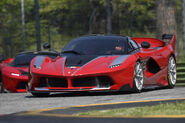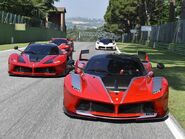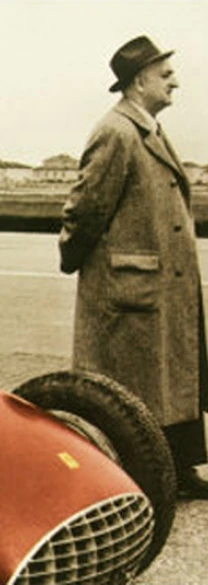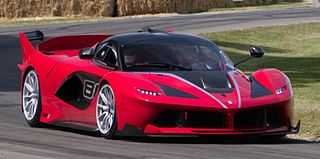
| |
| Ferrari FXX-K | |
|---|---|
| Ferrari | |
| aka | FXX K |
| Production | 2015-2017
40 units produced |
| Class | Track day car
Development prototype |
| Body Style | 2-seat berlinetta |
| Length | 4,896 mm (192.8 in |
| Width | 2,051 mm (80.7 in) |
| Height | 1,116 mm (43.9 in) |
| Wheelbase | 2,650 mm (104 in) |
| Weight | 1,495 kg (3,296 lb) with fluids
1,165 kg (2,568 lb) dry |
| Transmission | seven-speed paddle-shift dual-clutch automatic transmission |
| Engine | 6.3 L naturally aspirated 1,036bhp F140 V12, electric motor & KERS |
| Power | 1036 hp |
| Similar | LaFerrari |
| Designer | {{{Designer}}} |
The Ferrari FXX-K is a high performance limited production track day car manufactured by automobile manufacturer Ferrari in Maranello, Italy. Designed by Marco Fainello, Adrián Méndez and architect Samuel Rodriguez at Centro Stile Ferrari, the FXX-K is based on the street-legal LaFerrari. It succeeds Ferrari's previous developmental track day offerings, the FXX (and the FXX Evo) and the 599XX (along with the 599XX Evo). In 2016, the FXX-K was awarded the Compasso d'Oro industrial design award.
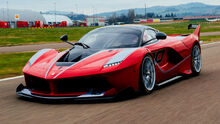
Overview
The name 'FXX-K' is actually Ferrari’s research and development program based around a laboratory car which is based on Maranello’s first hybrid, the LaFerrari. The K in the new car’s name is referring to the kinetic energy recovery system (KERS) which is used to maximize performance. The FXX-K will not be used in competing and was developed to be completely uncompromising. It uses a range of modern innovations that will ensure maximum performance anywhere.
Specifications
The hybrid powerplant used in the FXX-K has a total power output of 1,050 PS (772 kW; 1,036 hp) and over 900 N⋅m (664 lb⋅ft), of which 860 PS (633 kW; 848 hp) are delivered by the V12 ICE and 190 PS (140 kW; 187 hp) by the electric motor. The V12 engine has been tuned for track use as well as the HY-KERS system. With a dry weight of 1,165 kg (2,568 lb), the FXX-K has extremely effective downforce generation of 540 kg (1,190 lb) at 200 km/h (124 mph).[3][4] The car has four driving modes: Qualify (maximum performance on short distance), Long Run (for long-distance driving), Fast Charge (for faster recharging of the battery) and Manual Boost, that uses all of the power of the engine and batteries for maximum torque, cornering and speed. It has F1-based technology, including the E-Diff electronic differential, F1-Trac traction control and racing ABS brakes, all controlled from the centre console (Manettino). Like the preceding FXX and 599XX, the FXX-K is a part of Ferrari's Client Test Driver program, that allows owners of XX cars to drive at special tracks, collecting data for use in future Ferrari road and race cars. The front of the car has a large splitter and twin-profile spoiler, the headlights are very small for improving aerodynamics. On the rear, the tail is higher and includes an electronically operated spoiler with a tail fin and a small wing at the end of each fin to maximize the downforce. The car has a top speed of 350 km/h (217 mph).
Production And Marketing
Hublot Manufacture produced MP-05 "LaFerrari" Sapphire hand-wound Tourbillon wristwatches inspired by the FXX-K coupe.[5]
Ferrari FXX K Evo
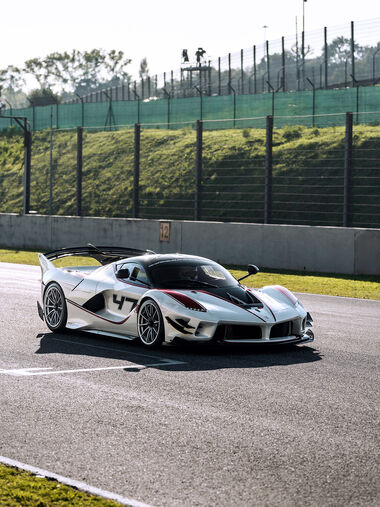
The FXX-K Evo was unveiled at the Ferrari Finali Mondiali 2017 on 28 October 2017 at Stazione Leopolda in Florence during the Ferrari 70th Anniversary celebration. It is an aerodynamic package, available for the existing Ferrari FXX-K. The FXX-K Evo allows the car to produce 23% more downforce than the standard FXX-K and 75% more than the road-legal LaFerrari due to a modified front fascia, a large rear wing and underbody diffusers. Performance and weight figures are unknown but a 90 kg (198 lb) decrease in weight is said to estimated by the manufacturer.
On 29 August 2018, the FXX-K Evoluzione (number 54) was shown again to the public during the Formula 1 Milan Festival 2018 led by former Formula 1 driver Giancarlo Fisichella.
Aerodynamics
The FXX-K Evo represents Ferrari’s response to the desire of a select few clients to share the experience of developing technologically innovative solutions with Ferrari’s technicians. Engineers and designers from Ferrari’s Style Centre have worked in synergy to elevate the performance of a state-of-the-art Ferrari “supercar” destined for track use to the maximum.
A year of CFD simulations and wind tunnel tests have given rise to an aerodynamic design that can achieve aerodynamic load values very similar to those seen on GT3 and GTE championship cars. The result is an increase in the lateral acceleration that can be reached in corners, as well as improved stability and greater driving pleasure.
The increase in downforce is equal to 23% compared to the previous version, and 75% compared to the road model from which the car is derived. This value can reach 640 kg at 200 km/h, and more than 830 kg when the car is travelling at top speed. The force exerted by a fixed bi-plane wing on the rear axle has increased the aerodynamic load level. The wing works in perfect synergy with the active aerodynamics of the rear spoiler, and the pressure fields created by the two load generation systems support and amplify one another.
Design
The significant increase in rear aerodynamic load has led to a major overhaul of the front bumpers and underbody, in order to ensure that the vertical force generated is balanced.
Changes have also been made to the shape of the side panels on the front bumpers, hollowing out the surfaces below the headlights. This has made it possible to add a set of side flicks inside the new space created, broken up by a vertical strip with side exhaust in front of the front wheels. This system ensures an efficient generation of downforce (10% more than the FXX-K), and takes full advantage of the knowledge and expertise acquired through the GT programmes. The regulations introduced in 2016 have rendered it possible to study the interaction between the load systems, both horizontal (flicks) and vertical (dive planes) loading systems, optimising the performance of these.
The new flow structures have necessitated an overhaul of the design of the rear bumpers. The expansion of the exhaust duct on the rear wings of the car has served to empty the volume behind the wheels. This enables effective channelling of the wheel wake, with a view to protecting and cleaning the flow that impacts the rear diffuser, thus increasing its capacity to generate efficient load by 5%.
The introduction of vortex generators along the underbody of the car has increased the ground effect. This renders it possible to capitalise on the acceleration created by the rear system and the front underbody, generating 30% of the load gained over the FXX-K.
The rear brake intakes also feature a new design, in response to the higher levels of performance offered by the car. This new innovation has not increased the profile of the car, so as not to affect the aerodynamic resistance; the new design of the air intake serves to boost its efficiency. In addition, the suspension features a special calibration function, which adjusts in accordance with the new aerodynamic efficiency values.
Gallery

|
This page uses some content from Wikipedia. The original article was at Ferrari FXX-K. The list of authors can be seen in the page history. As with Autopedia, the text of Wikipedia is available under the GNU Free Documentation License. |











